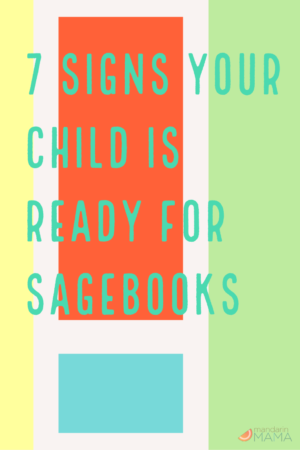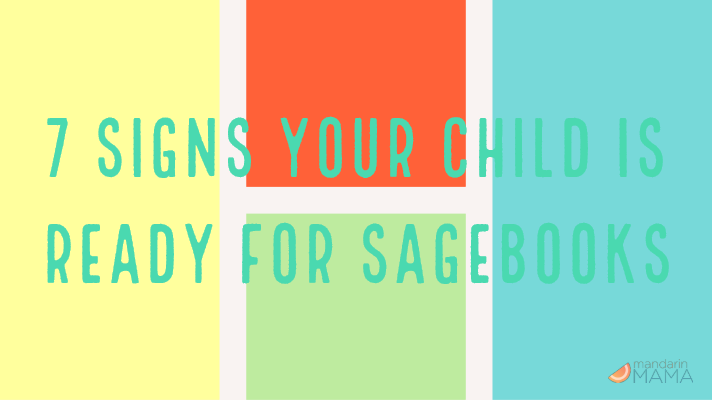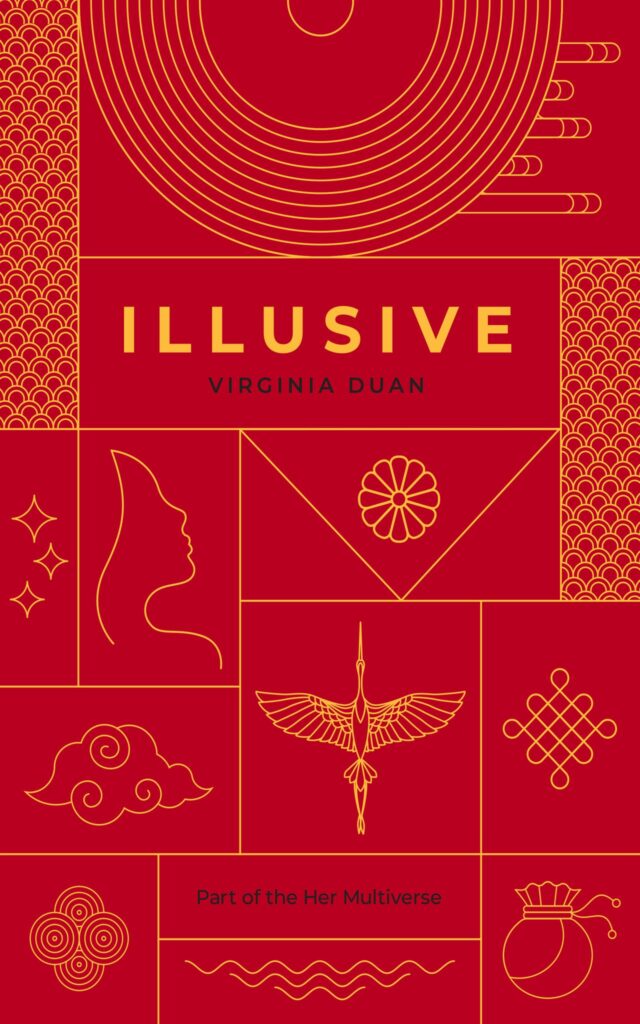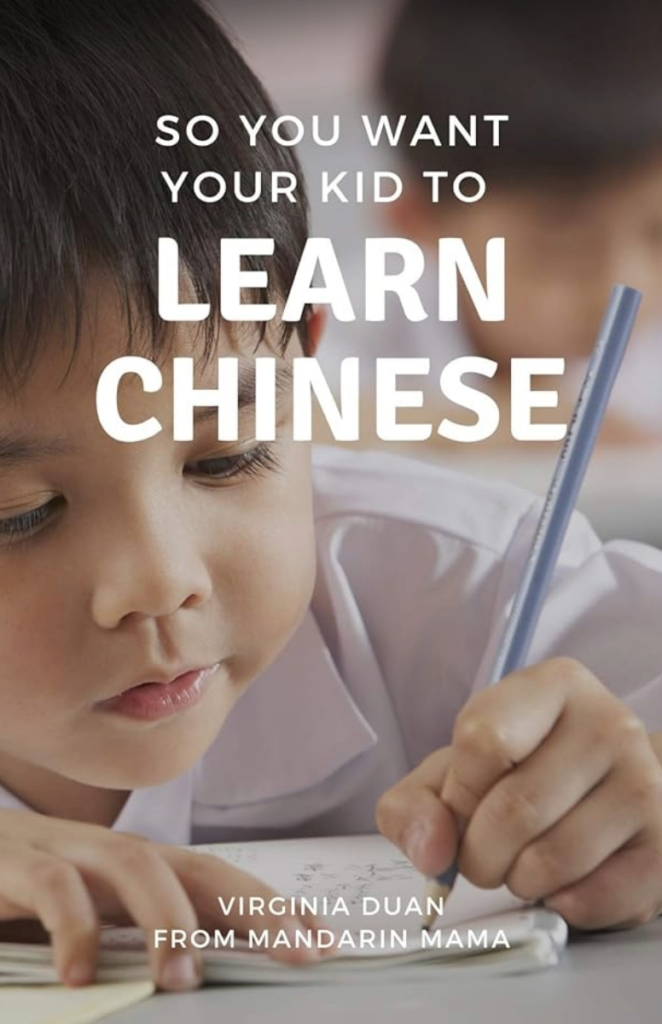
This post was sponsored by Sagebooks. All opinions are mine and mine alone.
For those of you following along my Sagebooks journey with Glow Worm (5.75), you’ll note that we’re almost done. (Okokokokokokok. We still have 15+ books to go through if we count the Treasure Box set – but we’re closer to the end than the beginning. STOP MAKING MY HIGH COME DOWN.)
Anyhow, if you stalk me (erm, I mean, are a dedicated super fan), you’ll also note that Sasquatch (2.5) is nearing three and that’s the suggested age Sagebooks recommends for starting their curriculum. Quite a few people have asked me if I’m going to start Sasquatch on Sagebooks as soon as I’m done with Glow Worm.
Also, I constantly get parents messaging me to see if their 2.5 year old is ready for Sagebooks.
So, I thought I’d talk about how to determine whether your child is ready for Sagebooks. Of course, you know your child best so you don’t have to listen to me, but then why read my articles? I’ve gone through the series three times and although I’m a little on the lazier side, I think that makes me more relatable. (That’s my story and I’m stick to it.)
Signs your child is ready for Sagebooks
1) They are emotionally and developmentally ready for reading.
Look. You know your kid. You know what reading requires. Take an honest assessment of your child and see if they fit the bill.
2) They can sit still.
What? My previous point was too vague? Fine fine fine. Here’s an easy one. Can your child sit still long enough to read with you? If they can’t even sit still for screen time, likely, they are not ready for Sagebooks.
I mean, Sagebooks is a great Chinese curriculum set. But I would be totally lying if I said that it was better than a screen that has the internet destination of YouTube.
However, if they’re already used to sitting still long enough for you to read a story or two to them, then likely, they can sit still for at least one lesson.
3) They show interest in reading and books.
If you’ve never shown your kid a book, you may want to check first. (I will readily admit that this is the case for the babiest of babies because by the fourth kid, you just kinda give up on life.) Otherwise, does your child like to flip through books and look at pictures? Do they try to bother your older children when they’re reading? Do they pretend to read when they play?
4) They understand that the text corresponds to spoken words and have meaning.
This is a super abstract concept and some kids get the idea earlier than others. Also, it’s totally possible to teach children how to read even if they do not understand this concept, but it will be a lot easier if they do.
5) They can speak.
Ok, that seems super obvious, but it’s really hard to determine whether or not your child can read if they do not read the character out loud to you. Also, it make seem silly since the beginning age is three, but Glow Worm didn’t really talk until he was three so it’s a legitimate thing to consider!
6) They have the necessary attention span.
Learning how to read – and especially Chinese – can be slow and painstaking work. Make sure your child can focus on one thing long enough to learn at least one character and read the five pages of the lesson. There are definitely ways you can engage your child more in the process than just making them read, but they still need the attention span to do it.
7) They comprehend Chinese.
Now, this is not a hard and fast rule. There are certainly some parents who have used the Sagebooks curriculum to teach their child (and themselves) Chinese. But I will tell you now that I don’t think it’s the best way to learn Chinese as a second language.
Sagebooks is designed to build literacy for native speakers. The books teach the top 500 most common used Chinese characters used in Chinese children’s books so that after going through the entire series and it’s Treasure Box books, your child should know about 600+ characters and can easily identify them in Chinese books geared for their age group.
This is not the most efficient way to learn Chinese.
But, hey. A non-zero number of families have successfully gone through Sagebooks as non-fluent learners so if you are willing to invest in the series and go through it, who am I to tell you you can’t?
Signs You are ready to teach your kid Sagebooks
This next part is semi-tongue in cheek, but I do think it’s important to know yourself, your limitations, and your personality.
1) You are willing to consistently set aside time for Sagebooks.
My longtime readers know how much I constantly talk about consistency. It’s because there really is no magic to teaching kids Chinese. You just have to do the time. And yes, you have to put in the time for Sagebooks because learning new skills requires repetition and practice. It is better to consistently put in 5 minutes a day than to cram 5 hours one day and then nothing for a week.
2) You are willing to read to your child.
This sounds obvious, but I honestly hate reading to my children. Call me a bad parent. I kind of agree. But isn’t it better to know yourself? You can outsource this part to your older children (and indeed, I have) or other teachers, but ultimately, you’re in charge of their learning because you’re the parent.
Going through this curriculum will require approximately eighteen months of consistent reading with your child. If you hate this sort of thing, are you mentally prepared to do this?
3) Do you have the patience?
Honestly, I cannot hammer in this point enough.
You have limited wells of patience and will power. Is teaching your kid how to read Chinese important enough to you that you are willing to expend your patience and will power on Sagebooks?
It’s okay to wait until your life allows space enough for you to do this. I wish I had known I was going to have a mid-life crisis last year because let me tell you, IT WAS REALLY DIFFICULT TO DO SAGEBOOKS THEN AND THE ONLY REASON I DID WAS BECAUSE I WAS BEING PAID.
It all worked out in the end, but I think it might have gone more smoothly if I had the emotional space and capacity to go through Sagebooks with Glow Worm.
Am I going to teach Sasquatch Sagebooks?
Nope. Well, not right now.
There is a reason I waited until Glow Worm was 4.5 before we even attempted to start Sagebooks. (And also why I waited for my older two children, too.) I’m an impatient sort and I just do not have the capacity to see if an overgrown toddler is going to read Chinese. I send my children to Chinese teachers for a reason – and that reason is because they are emotionally equipped to deal with small humans and I am not.
Also, it just takes so much longer to teach tiny children. So, I wait until they’re less tiny.
Because I love myself and believe in self-care and not traumatizing my children and making them hate Chinese, I consider the height of my love for them in delaying Sagebooks until they’re older and a smidge farther along on the developmental train.
Granted, I have mostly boys so, maybe if your daughter is more developed, you will have better luck at a younger age. I’m not saying my boys are dumber than my girl because smarts has nothing to do with it. But I am saying there is a reason I was able to push Gamera (7.5) into Cookie Monster’s (9.5) Chinese class and she was able to keep up.
Taking into account everything I’ve written, Sasquatch is definitely NOT ready for Sagebooks. He is interested in books because he wants to be big like his siblings and he can definitely focus on the iPad for hours at a time (I’m training him for the long flight to Taiwan). However, I’m not sure he understands that the characters symbolize spoken words. I mean, he can’t even really talk yet.
But most importantly, I know myself and I just can’t bring myself to do it. I will let his Chinese preschool teachers teach him how to sit still and pay attention this fall and when he’s 4.5, I will reap all those benefits and start Sagebooks then. I think we’ll all be the better for it.
What do you think? Did you start your child on Sagebooks really early? How was your experience? Would you recommend it? Or would you recommend waiting? Let me know in the comments.







